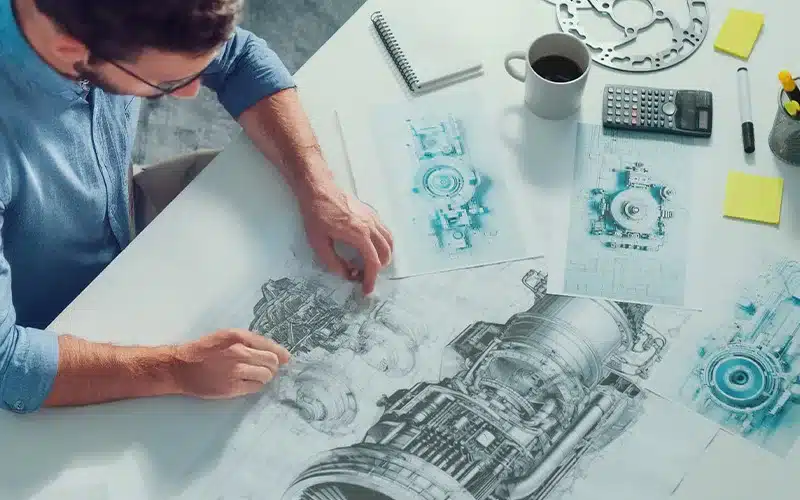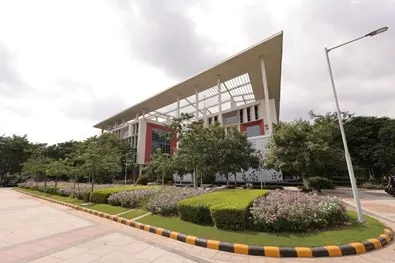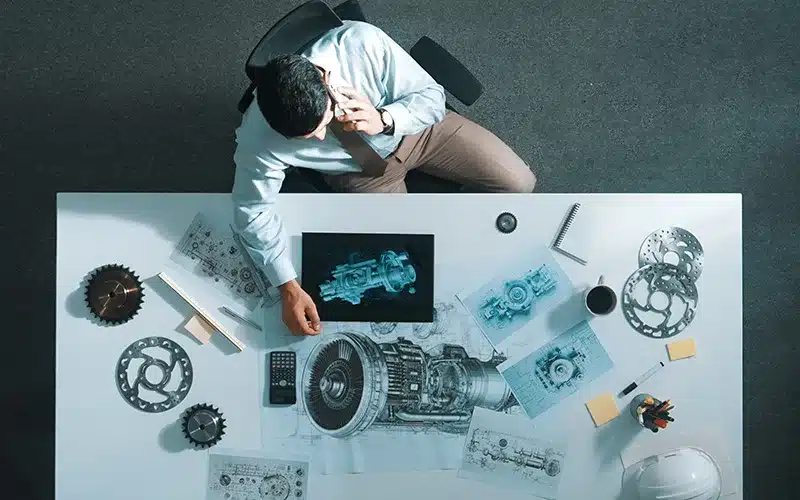Blogs

From ISRO to Tesla – Why Mechanical Engineering Is the Quiet Backbone of Every Breakthrough
August 18, 2025 | By BMU
If the future is to be built on clean energy, space exploration, robotics and smart mobility, have you ever thought about who will build the systems that make it possible?
Despite all the discussions happening around code, very few understand that no rocket goes up, no EV moves and no machines operate without the physical systems that design, power and support them. That’s where mechanical engineering steps in, not as an outdated field, but as the foundation of every real-world breakthrough.
Every system that moves, endures heat, manages energy, or maintains precision needs mechanical engineering at its core.
But the problem is, students often bypass this field, as they are unaware that today’s mechanical engineering courses go far beyond gears and engines. They blend materials science with AI, thermodynamics with control systems and design with purpose.
Covering key requirements of the new age areas like sustainability, automation and advanced materials, mechanical engineering isn’t just limited to operations and management of machines.
This blog isn’t about nostalgia for an old discipline. It’s about understanding why, from ISRO to Tesla, the world’s boldest technologies are still built on the shoulders of mechanical engineer concepts.
Every Great Leap Has Gears Behind It - The Silent Impact of Mechanical Engineering Courses
Look at ISRO’s Chandrayaan mission. While the headlines rightfully celebrate the landing on the south pole of the moon, what’s truly commendable is the immense engineering, planning, and perseverance that made such a feat possible. The efforts of innovation behind the scenes are what truly carried it to the moon. Cryogenic engines, structural dynamics, heat shields, landing legs and other essential components were designed and perfected by mechanical engineers.
It’s the same with Tesla, the world-leading EV automaker. While the spotlight often shines on self-driving software and Elon Musk’s bold vision, what truly powers the car’s excellence are the remarkable advances in thermal management, battery enclosures and motor efficiency. These quiet innovations are what enable longer range and unmatched safety, and that’s worth celebrating.
These are mechanical feats, not just digital ones. Take a look at this table:
| Organisation | Mechanical Focus Areas |
| ISRO | Cryogenics, launch pad systems, thermal protection |
| Tesla | Electric motors, HVAC, battery pack cooling |
| DRDO | Defence materials, shock absorbers, vehicle suspension design |
| Tata Motors | Fuel systems, structural design, crash energy absorption |
| GE Aviation | Jet engine components, fan blade dynamics, vibration control |
What’s the takeaway here? If any system moves, heats, cools, spins, or carries: a mechanical engineer is behind it.
So, you may ask one question naturally here: What makes these engineers so indispensable across a variety of domains?
Well, the answer lies in the depths of B.Tech. Mechanical Engineering syllabus. It doesn’t just cover the concept of fluid mechanics and energy system design. It trains students to be ready to tackle the problems, starting from space to transportation, HVAC and even aeronautics.
Why B.Tech. Mechanical Engineering is Behind the Design of All Innovation
When we talk about DESIGN in Mechanical Engineering, it is not about drawing some random lines. Rather, it is about applying scientific and technological concepts to meticulously construct the prototype on paper or in a computer that can be further built in an industry.
You want something strong, but also light. You want it fast, but it must stay cool. You want it to last, but keep it within budget.
This is what B.Tech. Mechanical Engineering courses cover and train you to balance one thing against another. They equip you with the capabilities to work under real constraints: size, heat, cost, power and time.
Take ISRO’s rocket nozzles. The material must survive extreme heat, but at the same time, it can’t add extra weight just to make the rocket as light as possible in terms of weight.
Or look at electric vehicles at Tata Motors. If the battery cools too much, energy is wasted. If it overheats, it’s dangerous. So what is your job as a mechanical engineer? Design a system that keeps every factor in check, always.
That’s called engineering judgement. It’s built through lab work, case studies and team projects: the core of any good B.Tech. Mechanical Engineering syllabus.
Powered by Legacy, Driven by Innovation, Designed for You: B.Tech. Mechanical Engineering at BML Munjal University
Pursuing B.Tech. Mechanical Engineering is not just about understanding how machines work; it is about how the world moves, builds and changes. At BML Munjal University, this journey begins with more than lectures and labs. It begins with the purpose of raising professionals who can competently work with the upcoming future technology.
Founded by the Hero Group, BML Munjal University brings together academic depth and industry insight to help you build solutions that work, not just in theory, but in the real world. From your first year, you’re immersed in hands-on learning, working on real-world case studies and industry-led projects that bridge classrooms with careers.
Here, mechanical engineering is not confined to textbooks. The programme offers Automobile Engineering & Robotics and Automation, woven seamlessly into a future-facing curriculum that reflects where the industry is headed, not where it’s been.
Conclusion
Mechanical engineering courses stay behind the spotlight but ahead in impact. It powers rockets, electric cars and smart systems with the kind of design thinking that holds everything together.
A B.Tech. Mechanical Engineering syllabus is designed to build the mindset to solve real problems across industries. Whether it’s ISRO’s launch success or Tesla’s drive systems, this discipline proves its worth quietly, consistently and globally.
If you’re searching for a mechanical engineering course that matches the pace of global innovation, BML Munjal University equips you to stand out from the rest and lead the future of mechanical thinking & design across industries.
Apply now to BML Munjal University and begin building the breakthroughs the world is waiting for.
Trending Blogs
-
10 Most Demanding Engineering Courses in Future (With Salary & Scope)
-
Top High Salary Courses after 12th Science to Pursue in 2026
-
Top 14 Career Options After LLB in India 2026
-
15 Fun Management Games for MBA Students
-
20 Top Law Firms in India That Pay The Highest Salary
Latest Blogs
-
Top 10 Career Options after MBA in Marketing with High Salary Potential
-
Top 10 Career Paths After MBA: High-Paying & In-Demand Roles
-
JEE Main 2026: Exam Dates, Registration, Syllabus, Pattern, Eligibility & Preparation Guide
-
Liberal Arts: The Degree That Prepares You for Jobs That Don’t Exist Yet
-
Top 10 Courses for Working Professionals to Grow Faster
-
CAT Exam Syllabus for MBA 2026: Complete Breakdown
-
Top Career Options after BCom: Find Your Ideal Career Path
-
CUET PG 2026: Exam Dates, Registration, Eligibility, Syllabus, Pattern, Results & Counselling
-
The B.Tech that Builds Careers that AI can’t Replace
-
So You Want to Study LLB? Read This Before You Decide
FAQs
The B.Tech. Mechanical Engineering fees in India can go up to 15 lakh rupees.
Numerous electives, including Energy Harvesting and Storage, Materials Science, Nanotechnology, etc, are available under B.Tech. Mechanical Engineering syllabus that students can pick as per their interest.
You’ll learn design software tools like SOLIDWORKS, ANSYS, CAD, etc.







